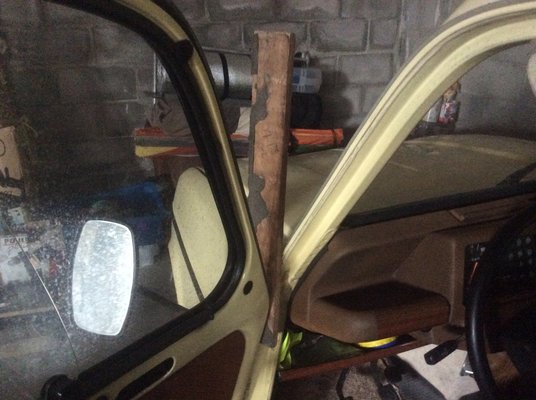(More considered [=sober!] thoughts follow now...)
You've cleaned up the hazard switch & confirmed 2 things:
1/ The car's indicators work exactly as they should when the hazard switch is OFF, the ignition is ON and the indicator stalk is used to indicate left or right. GOOD!
2/ The hazard lights (all four indicators) DO work, but only when the ignition is ON-hence the MOT fail. Not good, but not disasterous!
I have 2 thoughts to run past you now.
1/ Does the lead that you believe is the permanently live feed to the hazard switch have 12 volts, as recorded by a voltmeter? Furthermore, are you sure it's not a lead which is earthing something else? If it WERE something which was acting as an earth for something it may well show 12 volts when a voltmeter is connected between it and earth, as the meter's resistance is very high, but cannot deliver enough current to power anything. A simple way to sort this is to wire an old headlight bulb between the lead and earth. If the bulb lights, you have a good source of current. If it doesn't, the lead is no good to power anything and you need to deduce what it IS for (but that's for another day!)
2/ Assuming the permanently live feed IS a decent source of current & can light a headlight, I'd suggest you remove the hazard switch from the dashboard and, using a decent voltmeter with a continuity testing (OHMS reading) option, do the following:
a) with the hazard switch OFF you need to ascertain the terminal on the switch to which the ignition live goes IN to the switch. Usually this is numbered "1". Using your meter, you need to find where the electricity comes OUT of the switch. It should be coming out of only one terminal, and that one is usually numbered "4" Check that no other terminals have any electricity coming out of them. This is how the switch behaves when it's OFF; the "ignition live" electricity comes into terminal 1, out through terminal 4 and then goes off to the flasher unit-the hazard switch does NOTHING!
b) With the hazard switch ON electricity should NOT flow through terminals 1 & 4-these 2 terminals should now be disconnected from each other. Two other terminals, usually numbered "2" and "3" are now connected to each other; Terminal 2 should have the permanently live supply running TO the switch from the battery (via a fuse) and terminal 3 allows the electricity to run FROM the switch to the flasher unit. If this wire has become disconnected or broken the indicators will work, but the hazards won't.
c) Now to the flasher unit: there should be FOUR leads running to & from it; 2 power sources-one permanently live and one switched through the ignition, and 2 pulsed or "flashing" signal wires; one powers the indicators when the hazards are off and one powers all four indicators when the hazards are on. When in the ON position the hazard switch breaks the normal (switched) power supply and substitutes the permanently live power AND diverts the pulsed power to all four indicators. Given your explanation of the problem I suspect one of the four leads running to the flasher has become disconnected or incorrectly wired.
Sorry to have gone on so long, but I hope all this helps!





 , I carry this for same purpose, its also cut to length that if put on seat crossmember and brake pedal it’ll lock the brakes ( my wheels have no centre hole to tighten driveshaft nut )
, I carry this for same purpose, its also cut to length that if put on seat crossmember and brake pedal it’ll lock the brakes ( my wheels have no centre hole to tighten driveshaft nut )